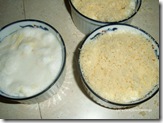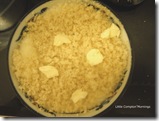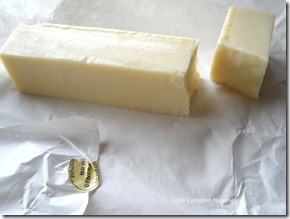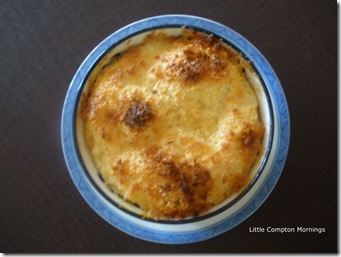You don’t hear the term “store cheese” too much anymore because, well, most of the stores are gone. The general stores, that is, where giant wheels of cheese sat out on the wooden counter, usually the meat counter, waiting to be cut to order. These wheels weighed some 40 pounds, maybe more, and they were a beautiful, reassuring sight. As long as that sturdy wheel sat there, you knew that some things, at least, could be relied upon. Its sheer size, its magnificent presence, was a kind of guarantee. Whether you bought some or not—which usually you did--it was there if you needed it. Without the store, there’s no cheese, and life in places where the store and the cheese have disappeared is less secure because of it.
Store cheese is always cheddar, but very fine cheddar—one that is well-aged, white, meltingly creamy, ideal at room temperature—indeed, almost warm. To describe it as extra sharp would be an injustice; its mouth-filling flavor is more aptly expressed as intensely rich with a saliva-producing edge. Its texture is firm but not hard, and it should fracture or break nicely when cold. Because a well-aged cheddar will soften considerably as it warms, be sure it is cold when you grate it, and keep grated cheese cool until you are ready to use it so it doesn’t mush together.
Cheddar’s origins are English, and New Englanders remain deeply committed to their ancestral cheese. The store cheese that I know and love comes from Cabot Creamery in Vermont, and for years it was sold at Wilbur’s Store in Little Compton. Actually, it still is: Wilbur’s is still there, and the cheese is still sold there. But Wilbur’s changed hands, and now the store cuts it up in advance rather than to order, and sells pieces already wrapped and marked. It’s the same cheese. But it’s not the same.
LCM Store Cheese Soufflé
Bread forms the “base” of this soufflé, eliminating the need to make a white sauce. You could serve this for lunch with a big plate of sliced tomatoes or as a side dish at dinner, especially with ham. Serves 4.
1 cup coarse fresh bread crumbs plus additional for topping (see Note)
1 cup grated best-quality store cheese or well-aged white cheddar, packed
2 cups whole milk
2 large eggs, separated
½ tea salt
1/8 tea cayenne pepper 
1-2 T cold unsalted butter
Preheat oven to 400 F. Butter a 1 ½ qt soufflé dish or 4 1-cup ramekins or small bowls; tapered bowls seem to encourage a nice mound.
In a medium bowl, place the bread crumbs and cover with the milk; allow to rest for a minute. Drop in the egg yolks and beat. Add the cheese and stir. Beat the egg whites until stiff and fold them into the other ingredients in two stages.
Using a ladle, fill the dish or distribute the batter among the ramekins or bowls. Sprinkle the tops with additional breadcrumbs, and dot with butter.
Bake for about 30 minutes, or until puffy and nicely browned. Like all soufflés, these will fall soon after removing from the oven. By all means send them to the table, but wait ten minutes or so before cutting into them or they may throw some liquid. They will still be hot, and their texture excellent, after the wait.
Note: Fresh bread crumbs can be made from any fresh or day-old but not dry or hard bread, crusts removed. A food processor is the perfect tool for this; a few pulses with give your coarse crumbs, and few more, fine ones. If you don't have a food processor, your can tear the bread into small pieces for this recipe.
I keep a bag of fine dry bread crumbs in the freezer at all times, and replenish it whenever I have a few leftover pieces or an odd bread end. They have endless uses as toppings and thickenings, and for breading meats and fish. There is nothing so alluring as a casserole topped with a crunchy golden crown or a plate-size veal schnitzel with lemon, and having crumbs always on hand makes them everyday options.





No comments:
Post a Comment